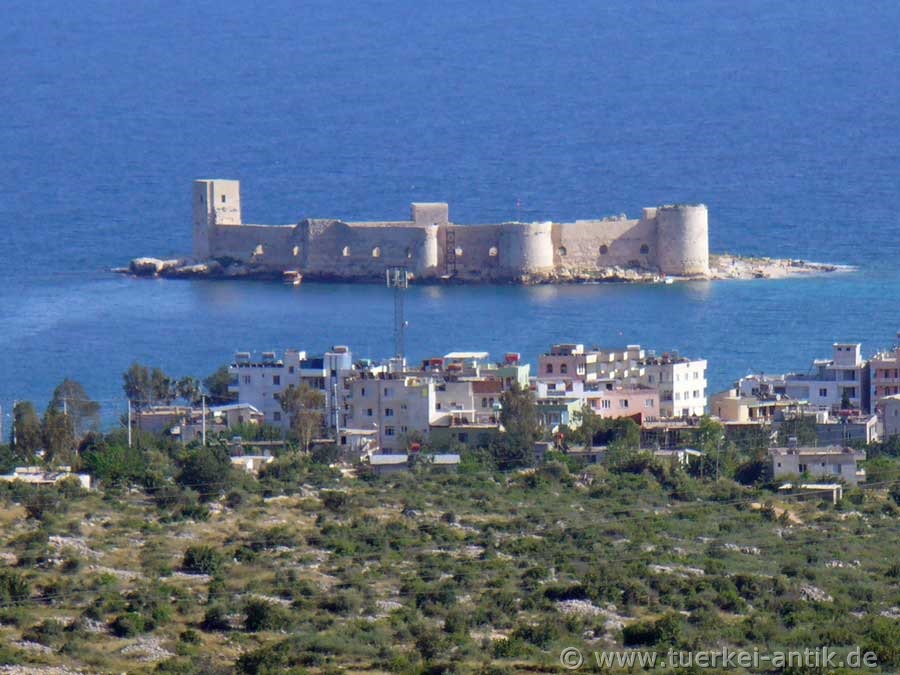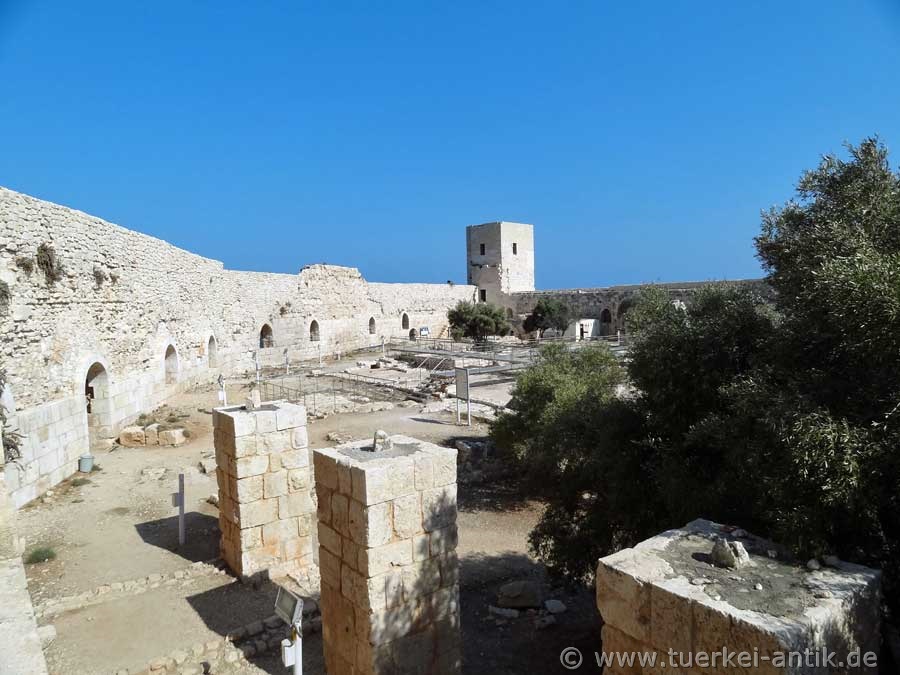 |
| Kiz Kalesi (Maiden's Castle) | |||
 |
|
||
| Kiz Kalesi | |||
|
At Strabon the island is mentioned under the name Krambusa. |
|||
|
|
|||
|
The walls of the fortress are equipped with embrasures and have a total length of 192 m, in east-west direction the castle has its largest width with 75 m. The south and west walls are approximately at right angles to each other. The southern one has three rectangular towers, of which the three-storey east tower is the highest. The walls consist of different stones, partly embossed and unembossed cuboids, spolia of ancient buildings, but also the small masonry typical for Armenian buildings. On the inside of the western wall there is a fortified walkway that opens inwards via arches. In the inner courtyard there are remains of a chapel and a cistern. |
|||
|
|
|||
|
The Venetian traveller Giosafat Barbaro mentions two Armenian inscriptions in his 15th century travelogue, as does the French Orientalist Victor Langlois, who published them in 1861. One of them is still preserved above the restored door of the eastern corner tower, the second has disappeared. According to Langlois, in the Middle Ages the island was connected to the mainland and the Korykos Castle by a dam. In fact, remains of a pier can still be seen on both the western beach and the Korykos fortress. The legend that a sultan had the castle built in order to protect his daughter from a predicted snake bite is about to change its history. However, the deadly bite came to the daughter anyway, as the snake was brought to the island in a fruit basket. This legend is often heard in Turkey, for example about the Girl's Tower in the Bosporus near Istanbul. |
|||
| Photos: @chim | |||
| Translation aid: www.DeepL.com/Translator | |||
| Source: Wikipedia and others | |||
|
|
|||


